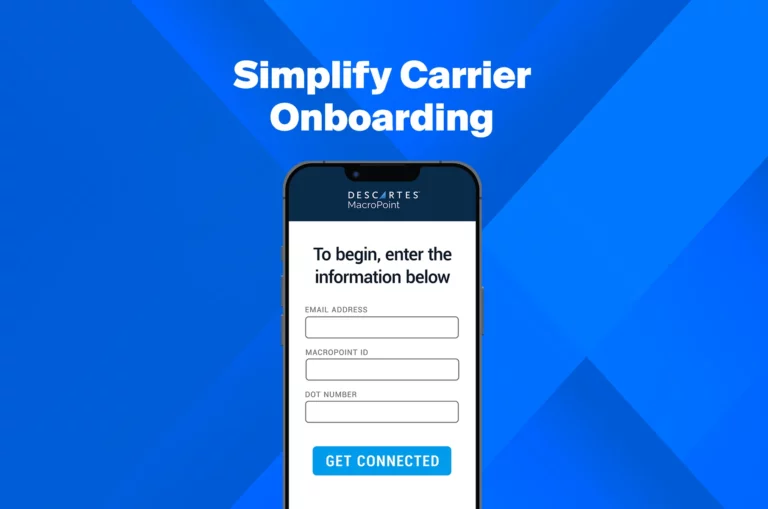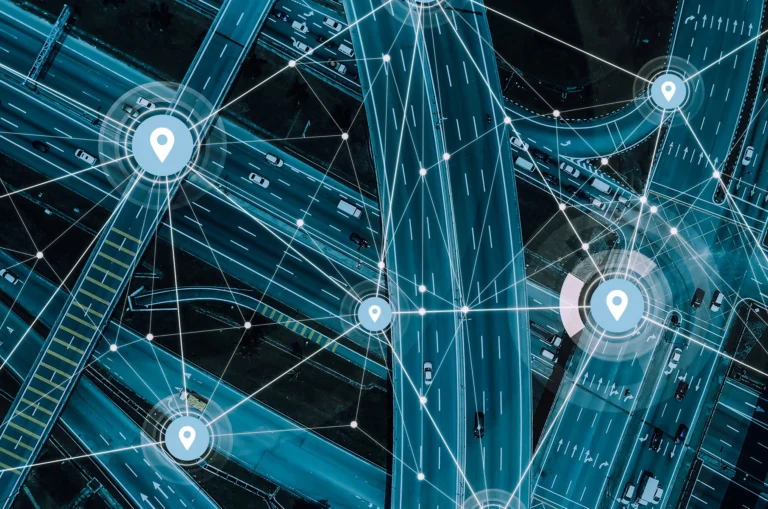In the world of transportation management, container tracking has become an essential tool for shippers, 3PLs, carriers alike. About 80-90% of traded goods can be attributed to ocean shipments/cargo.
In recent years, the ability to monitor the location and condition of containers throughout the shipping process has become essential. Tracking sea cargo helps ensure timely delivery and reduce the risk of supply chain disruption, carrier related feeds or a manufacturing shutdown.
However, the cost of implementing container tracking technology can vary significantly depending on a range of factors.
In this article, we’ll explore the different factors that can affect the cost of container tracking and examine the benefits of container tracking and why it’s becoming increasingly popular in the transportation management industry.
What is Container Tracking?
Container tracking refers to the process of monitoring shipping containers as they move through the supply chain.
This generally involves tracking the container’s location or shipment status, but some platforms provide capabilities can also provide information on temperature, humidity, shock and vibration, and other factors that can affect the cargo and the goods inside.
Container tracking technology typically uses GPS or other tracking devices to monitor the container’s location in real-time. Some solutions also incorporate sensors that can detect changes in temperature or other environmental factors.
The data and alerts received from a container tracking solution can be monitored and analyzed by freight teams or logistics professionals who can then communicate that information to the right individuals in the case of an issue.
Common Features of an Ocean Visibility Platform
Ocean visibility platforms offer a comprehensive list of features and capabilities to help monitor and assess sea freight. Here are a few of the main features you’ll see when it comes to ocean visibility and cargo tracking platforms. Real-time tracking: Provides real-time tracking and monitoring of ocean freight shipments, including their current location, estimated arrival time, and any delays or disruptions.
Carrier management: Offers a comprehensive view of all carriers involved in shipment, allowing for efficient carrier management and communication.
Documentation management: Enables efficient management, security, and storage of shipment documentation, including invoicing, bills of lading, customs documents, and other important paperwork.
Analytics and reporting: Provide analytics and reporting capabilities to analyze performance metrics to improve on-time delivery, carrier performance, and costs associated with shipments.
Collaboration tools: Facilitates collaboration between shippers, carriers, and other stakeholders, allowing for seamless communication and issue resolution.
Alerts and notifications: Send alerts and notifications via automated monitoring to keep all parties informed of any changes or issues with the shipment.
Integrations: Integrates with other systems such as ERP, TMS, and WMS for seamless data exchange and process automation.
Why is Container Tracking Important? Benefits
Container tracking offers several benefits for shippers, carriers, and other logistics stakeholders. Here are just a few of the key advantages:
Improved visibility: With container tracking, logistics professionals can monitor the location and condition of containers in real-time, giving them greater visibility into the supply chain. This can help them identify potential delays or issues before they become major problems.
Reduced risk of loss or damage: By tracking containers, shippers and carriers can reduce the risk of cargo being lost or damaged in transit. They can quickly identify when a container has been opened or tampered with and take action to mitigate the risk.
Better inventory management: Container tracking can also help with inventory management by providing accurate data on the location and status of cargo. This can help logistics professionals make informed decisions about when to reorder stock or adjust production schedules.
Increased efficiency: By improving visibility and reducing the risk of delays or damage, container tracking can help logistics professionals operate more efficiently. This can lead to more reliable delivery times, lower costs, and a more streamlined supply chain overall.
Factors Affecting the Cost of Container Tracking
Now that we’ve covered the benefits of container tracking, let’s take a closer look at the factors that can affect its cost. Here are some of the key considerations:
Type of technology: There are many different types of container tracking technology on the market, from simple GPS trackers to sophisticated solutions that incorporate sensors and data analytics. As you might expect, more advanced solutions tend to be more expensive.
Coverage area: The cost of container tracking can also depend on the coverage area. Some solutions only offer tracking within a specific region or country, while others can track containers anywhere in the world. The more extensive the coverage area, the higher the cost is likely to be.
Frequency of updates: Some container tracking solutions provide real-time updates on the location and condition of containers, while others only update periodically. Solutions with more frequent updates tend to be more expensive.
Integration with other systems: Container tracking can be integrated with other logistics systems, such as transportation management or warehouse management software. However, this can add to the cost of the solution.
Volume of Shipments: Maybe the most obvious, but the volume of containers shipped can also affect the cost of container tracking via volume-based discounting. The more you ship, the less it costs.
How Much Can I Expect to Pay for Container Tracking?
Tracking sea cargo and containers will often depend on the type of technology employed, however costs associated with tracking will often be based ‘per container.’
GPS Container Tracking Devices
These devices can range in price from around $100 to several hundred dollars per unit, depending on the features and capabilities of the device. For example, a basic GPS tracking device may cost around $100, while a more advanced device with features such as temperature monitoring and tamper detection may cost several hundred dollars. In addition to the cost of the tracking device, there may be ongoing subscription or service fees associated with container tracking.
Visibility Platform (Software-as-a-Service)
Ocean container tracking with visibility platforms offers a comprehensive solution to consolidate, monitor and track shipments. By leveraging a carrier visibility network, these platforms can enable real-time visibility into the location, status, and condition of ocean containers from any carrier.
For example, a service provider may charge a monthly fee of $10 to $30 per container for basic tracking services, while more advanced services such as temperature monitoring or real-time location tracking may cost more per month.
Carrier/Partner Portals
Some shipping lines and logistics providers may offer container tracking as part of their standard services, while others may charge additional fees for this service. For example, a shipping line may charge a fee of $25 to $50 per container for basic tracking services, while a logistics provider may charge a fee of $50 to $100 per container for more advanced tracking and monitoring services. This method is only sustainable across a small volume of carriers, otherwise this task becomes unwieldy for employees.
Implementation
It’s noted that many ocean visibility platforms will charge a fee related to hardware and software implementation. Implementation costs will widely depend on customization, data integration, and initial setup processes.
Maintenance
This includes ongoing expenses for system updates, upgrades, and bug fixes to ensure the platform functions optimally. Regular maintenance may involve hardware maintenance, software patches, security updates, and technical support.
Support
These costs relate to the assistance, technical support, and training supplied by IT and platform employees. Support costs can vary based on the level of support required, including options for phone or email support, on-site assistance, or dedicated support personnel.
Descartes MacroPoint™ Ocean Visibility Solution
The team at Descartes MacroPoint is proud to announce a powerful tool for global shippers looking to gain visibility into their ocean freight operations.
Using advanced analytics and real-time data feeds, the solution provides shippers with a comprehensive view of their ocean shipments, allowing them to proactively manage exceptions, improve operational efficiency, and enhance customer service.
With features such as dynamic vessel tracking, automatic alerts for delays or route changes, and customizable reporting, the Ocean Visibility solution enables shippers to make better decisions and optimize their supply chain performance. Overall, this solution can help businesses gain a competitive edge by improving their visibility and control over their ocean freight operations.
Speak to a Descartes MacroPoint representative and get a demo of the platform.

